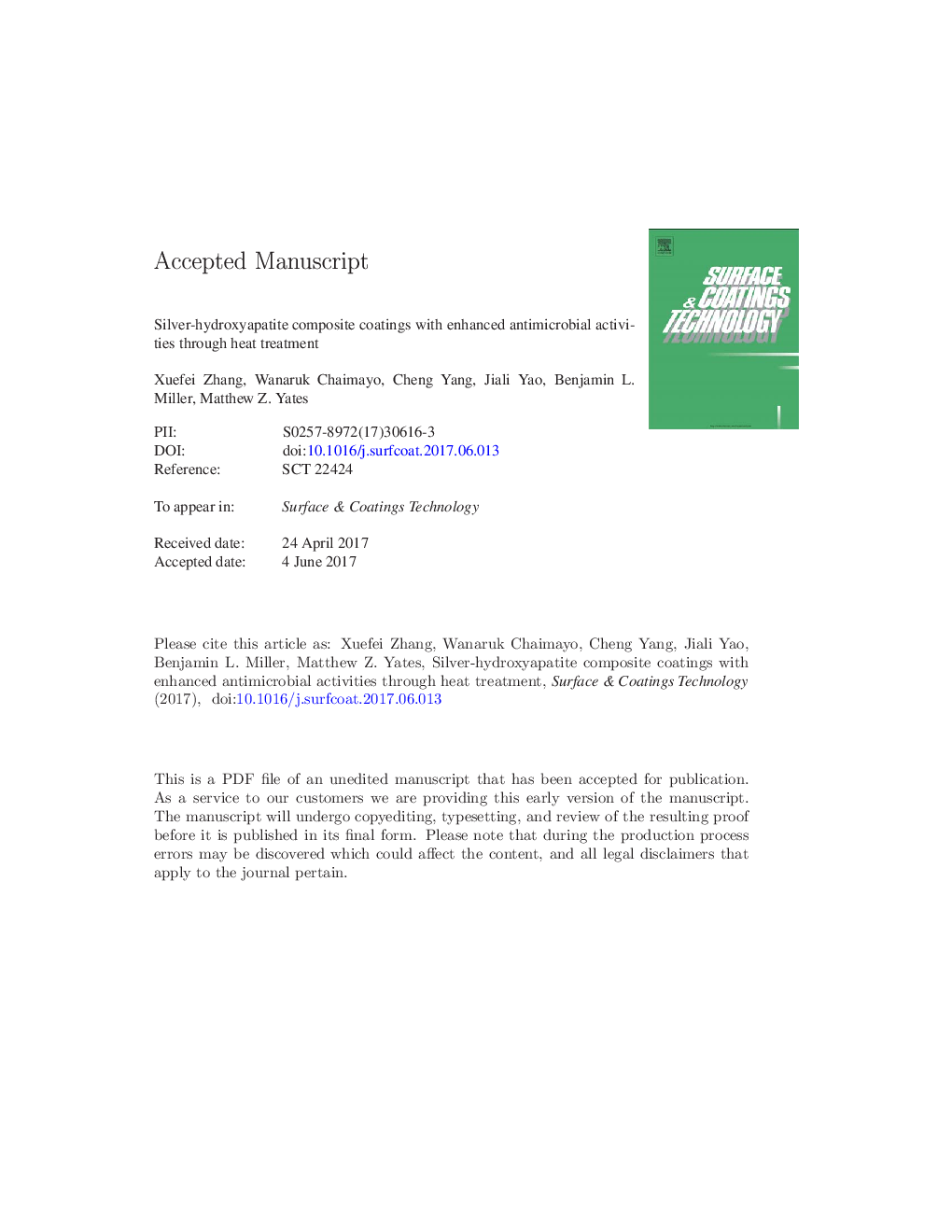| Article ID | Journal | Published Year | Pages | File Type |
|---|---|---|---|---|
| 5464789 | Surface and Coatings Technology | 2017 | 19 Pages |
Abstract
Silver nanoparticles deposited on hydroxyapatite coatings (Ag-HA) by a two-stage electrochemical method were found to impart inconsistent antibacterial properties to the bioactive coatings. To test the hypothesis that oxidation of the silver nanoparticles would enhance antimicrobial activity, the coatings were heated in air at 170° C for 8 h. Following heat treatment, X-ray photoelectron spectroscopy confirmed the formation of silver oxide on the surface of the silver nanoparticles. The heat treatment did not cause any measurable change in the crystal structure of the coating as determined by X-ray diffraction. Bacterial culture tests revealed that the heated Ag-HA coatings were able to kill Escherichia coli (E. coli) more consistently than non-heated coatings. It is believed that silver nanoparticles in the heated Ag-HA coatings can release more Ag+ ions into the bacterial suspension, since Ag+ ions play a significant role in antibacterial activity. The heat treatment temperature of 170° C is high enough for dry heat sterilization protocols, yet low enough to allow hydroxyapatite crystals to remain stable. The heat treatment process therefore offers a simple technique to ensure consistent antimicrobial activity from the bioactive Ag-HA composite coatings.
Related Topics
Physical Sciences and Engineering
Materials Science
Nanotechnology
Authors
Xuefei Zhang, Wanaruk Chaimayo, Cheng Yang, Jiali Yao, Benjamin L. Miller, Matthew Z. Yates,
